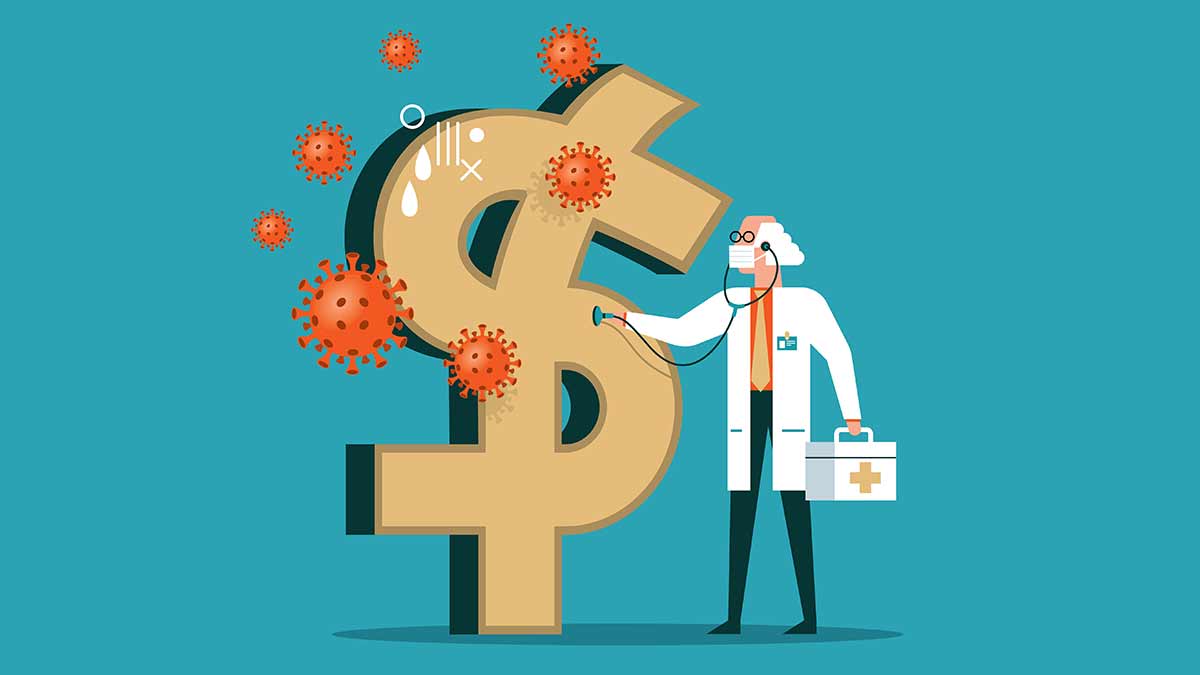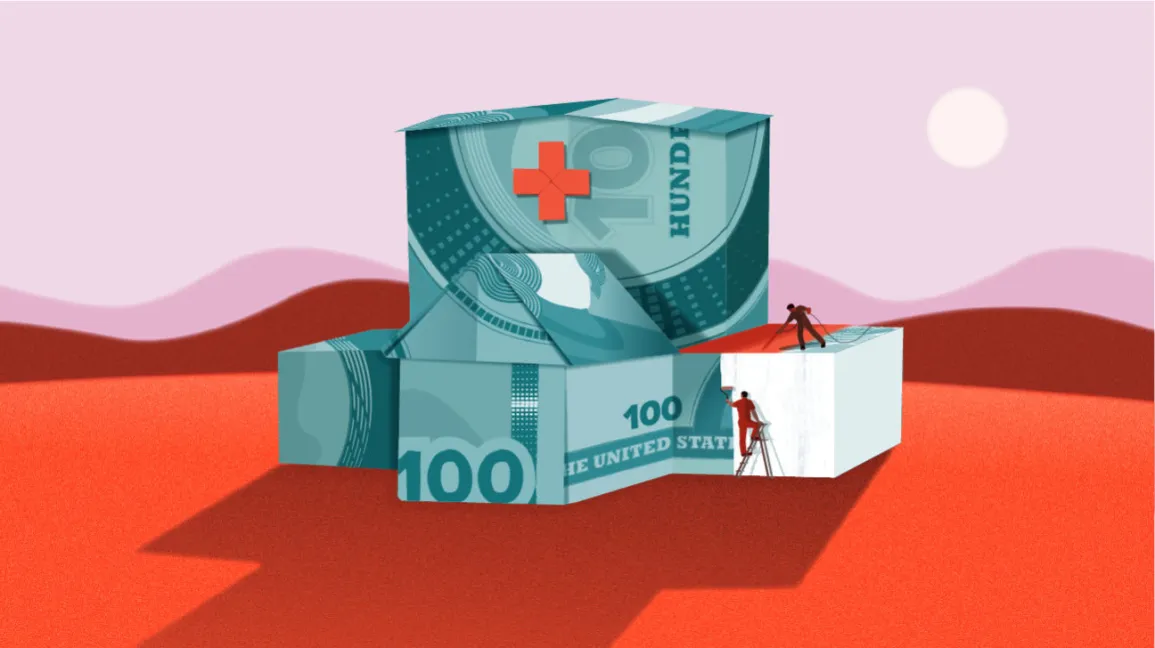High Cost Of Care For Cancer In The USA Is Not Improving Survival Rates
According to a study published in JAMA Health Forum, despite spending twice as much on cancer care as the average high-income countries, the United States' cancer death rate is only slightly better than average. It is commonly known that there is a high cost of care for cancer in the United States, and that patients in the United States enjoy earlier access to innovative cancer therapies.
Author:Suleman ShahReviewer:Han JuMay 31, 202314.2K Shares216K Views

According to a study published in JAMA HealthForum, despite spending twice as much on cancer care as the average high-income countries, the United States' cancer death rate is only slightly better than average.
It is commonly known that there is a high cost of care for cancerin the United States, and that patients in the United States enjoy earlier access to innovative cancer therapies.
However, whether that investment has resulted in fewer cancer deaths is unknown, according to senior author Cary Gross, MD, professor of medicine and founder and head of Yale School of Medicine's Cancer Outcomes, Public Policy, and Effectiveness Research Center in New Haven, Connecticut.
According to the American Cancer Society, this is crucial because there have been many significant improvements in cancer treatment in the previous ten years, including a new type of immunotherapy that can modify a patient's T cells (a type of immune cell) to better fight cancer (ACS).
According to the Lown Institute, a nonpartisan think tank focused to improving America's healthcare system, innovative medicines can cost a lot of money - up to a million dollars per patient in some situations.
Cancer Is Second Leading Cause Of Death In The U.S.
Although the chance of dying from cancer has decreased since its high in 1991, the American Cancer Society reports that it is still the second leading cause of death in the United States, after heart disease.
Cancer will be diagnosed in 1.9 million individuals in 2022, and 609,360 people will die from it.
According to the Centers for Disease Control and Prevention, lung cancer is the top cause of cancer death in the United States, followed by colon and rectum cancer, pancreatic cancer, breast cancer, prostate cancer, liver cancer, and intrahepatic bile duct cancer (CDC).
The High Cost Of Cancer Treatment In The United States Does Not Enhance Survival Rates
Walter White, the iconic television character, had to become a meth cook to pay for his lung cancer treatments, but Yale University researchers believe he would have been better off moving to another nation.
According to their research, the high expense of cancer therapyin the United States does not always imply a better probability of surviving the disease.
The United States spends twice as much on cancer care as the average high-income country. Despite the high cost, cancer death rates in the United States are only slightly better than the global average.
In a university announcement, lead study author Ryan Chow, an M.D./Ph.D. student at Yale, states, "There is a general assumption that the United States offers the most sophisticated cancer care in the world."
"Our system is praised for generating innovative therapies faster than other countries and getting them to patients." We wanted to see if the United States' large investment in cancer care is linked to better cancer outcomes."
This project, which included 22 high-income countries, was co-authored by Yale and Vassar College researchers. The United States had the greatest spending rate of any of the countries.
In Comparison To Other Countries, The United States Spent The Most On Cancer Care
Researchers conducted a nation-level analysis of 22 high-income countries, comparing how much each country spent on cancer care to age-standardized cancer mortality rates in 2020, with and without correcting for smoking, to see if the significant U.S. expenditure in cancer treatment leads to improved outcomes.
- The United States spent more than $200 billion on cancer treatment, the most of any of the 22 countries.
- Out of the 22 countries studied, the United States had the seventh best death rate - Australia, Finland, Iceland, Japan, Korea, and Switzerland spent less on cancer care yet had better cancer outcomes than the US.
- Researchers discovered no link between a country's cancer spending and its cancer death rate; in other words, countries that spend more on cancer care do not always have better cancer results.
After Accounting For Fewer Smokers, Cancer Mortality Rates In The United States Are No Better Than The Global Average
Smoking is the leading cause of cancer death, yet smoking rates in the United States have always been lower than in other countries.
According to the CDC, about 20 out of 100 adults in the European Union (EU) reported smoking daily cigarettes in 2018, compared to 12.5 out of 100 persons in the United States.
The United States' cancer death rate was no better than the typical high-income country after accounting for worldwide disparities in smoking rates: nine nations had lower smoking-adjusted cancer mortality than the United States.
"The data reveal that, despite the fact that the United States spends the most on cancer - twice as much as other high-income countries - we only achieve middle-of-the-road results in termsof cancer mortality."
"We spend a lot of money on cancer treatments but don't get the results that our patients deserve," adds Gross.
Findings Suggest The U.S. Healthcare System Needs To Reevaluate Priorities In Cancer Care
"To put it simply, it's all about value — and values. Price is what you pay, but value is what you get, as the saying goes. And in this situation, the United States is not receiving adequate compensation for its cancer treatment.
"How should we prioritize our cancer spending?" is a question that pertains to values. Gross agrees.
According to Gross, the United States might better prioritize cancer care spending by investing more in cancer prevention programs, lowering cancer drug prices, and increasing cancer research funding.
Conclusion
What does it mean to "double down on cancer research"? For starters, lead author Ryan Chow, an MD and PhD student at Yale School of Medicine, thinks that revamping the clinical trial and drug regulation process to put patients' interests first would be a good start.
"It's not just about performing more research and having more pharmaceuticals licensed; we also need to make sure that those research efforts are directed into clinical studies that will determine whether these new drugs can help people live longer and better lives."
Otherwise, we'll just keep spending money on new cancer medications that won't help our patients at all," he says.
"One of many issues that has to alter is the clinical trials procedure for cancer treatments. To address the difficulties raised in this study, a multipronged approach to cancer care reform is likely required," Chow says.
Jump to
Cancer Is Second Leading Cause Of Death In The U.S.
The High Cost Of Cancer Treatment In The United States Does Not Enhance Survival Rates
In Comparison To Other Countries, The United States Spent The Most On Cancer Care
After Accounting For Fewer Smokers, Cancer Mortality Rates In The United States Are No Better Than The Global Average
Findings Suggest The U.S. Healthcare System Needs To Reevaluate Priorities In Cancer Care
Conclusion

Suleman Shah
Author
Suleman Shah is a researcher and freelance writer. As a researcher, he has worked with MNS University of Agriculture, Multan (Pakistan) and Texas A & M University (USA). He regularly writes science articles and blogs for science news website immersse.com and open access publishers OA Publishing London and Scientific Times. He loves to keep himself updated on scientific developments and convert these developments into everyday language to update the readers about the developments in the scientific era. His primary research focus is Plant sciences, and he contributed to this field by publishing his research in scientific journals and presenting his work at many Conferences.
Shah graduated from the University of Agriculture Faisalabad (Pakistan) and started his professional carrier with Jaffer Agro Services and later with the Agriculture Department of the Government of Pakistan. His research interest compelled and attracted him to proceed with his carrier in Plant sciences research. So, he started his Ph.D. in Soil Science at MNS University of Agriculture Multan (Pakistan). Later, he started working as a visiting scholar with Texas A&M University (USA).
Shah’s experience with big Open Excess publishers like Springers, Frontiers, MDPI, etc., testified to his belief in Open Access as a barrier-removing mechanism between researchers and the readers of their research. Shah believes that Open Access is revolutionizing the publication process and benefitting research in all fields.

Han Ju
Reviewer
Hello! I'm Han Ju, the heart behind World Wide Journals. My life is a unique tapestry woven from the threads of news, spirituality, and science, enriched by melodies from my guitar. Raised amidst tales of the ancient and the arcane, I developed a keen eye for the stories that truly matter. Through my work, I seek to bridge the seen with the unseen, marrying the rigor of science with the depth of spirituality.
Each article at World Wide Journals is a piece of this ongoing quest, blending analysis with personal reflection. Whether exploring quantum frontiers or strumming chords under the stars, my aim is to inspire and provoke thought, inviting you into a world where every discovery is a note in the grand symphony of existence.
Welcome aboard this journey of insight and exploration, where curiosity leads and music guides.
Latest Articles
Popular Articles





